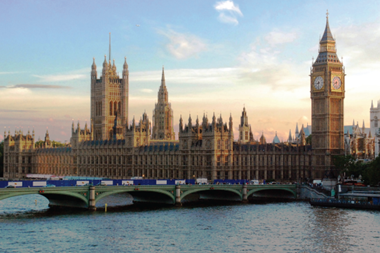The Bank of England has cut interest rates by 0.25 basis points and re-launched its quantitative easing (QE) programme in a move set to cause further pain for the underfunded UK pension sector.
While markets were widely expecting the UK central bank to cut interest rates to 0.25% after initial data showed the economy slowing in the wake of the decision to leave the European Union, the monetary policy committee’s decision to expand QE by £70bn (€81.9bn) – split between £10bn in corporate bonds and £60bn in Gilts – surprised many.
In his letter to UK chancellor Philip Hammond, bank governor Mark Carney argued that the purchase of corporate bonds was required to lower borrowing costs, and that the Gilt purchase, which will see the overall QE programme grow to £435bn, would boost the prices of other assets.
Dan Mikulskis, managing director at consultancy Redington, noted the bank’s announcement had seen long-dated Gilt yields decline by 10 basis points, in addition to a longer-term decline of 1% over the last 12 months.
“Many pension schemes undertaking actuarial valuations at the June or September quarter ends are likely to show stressed positions – with higher deficits despite reasonable asset growth,” he said.
Mikulskis also predicted sponsors would need to increase contributions to address expanding deficits, or the Pensions Regulator would be required to extend funding plans to allow schemes more time to close the gap.
His calls for greater leniency were echoed by the Pensions and Lifetime Savings Association.
Antony Barker, director of pensions at the Santander UK Group Pension Scheme, also warned about the impact of QE on deficits and questioned whether the asset purchase programme would always translate to banks increasing lending.
Discussing the drop in Gilt yields, Barker told IPE: “This potentially feeds through, at least for banks, into bigger IAS 19 deficits, against which capital has to be held, and if capital is being held for pension risk, it can’t be used to support lending.”
He added that each £100m used by banks to underpin pension deficits equated to £3bn-4bn of loans they were no longer able to offer.
“Hence, £10bn of QE could be very quickly offset, given the collective liabilities of bank pension schemes,” he said.
JP Morgan Asset Management (JPMAM) also questioned the overall impact of the QE programme and asked what the renewed purchase of Gilts by the BoE would do to the bond market’s depth.
The manager’s head of pension advisory and solutions, Sorca Kelly-Scholte, noted that pension funds’ ability to access Gilts for hedging purposes was important where exposure could not be hedged through derivatives but would be curtailed by the bank’s £60bn purchase.
“As UK pension funds become cashflow negative, they will increasingly need physical assets rather than leverage to service those cashflows,” she added.
Kelly-Scholte speculated that the decision by the new UK government to abandon former chancellor George Osborne’s 2020 surplus target would potentially allow increased Gilt issuance, although there were no guarantees they would be of the long-dated and inflation-linked nature desired by the pensions industry.
Barker also advocated greater Gilt issuance, suggesting they should be issued in place of QE, while the proceeds should be directed towards infrastructure – including new nuclear power capacity for the UK and other projects.













